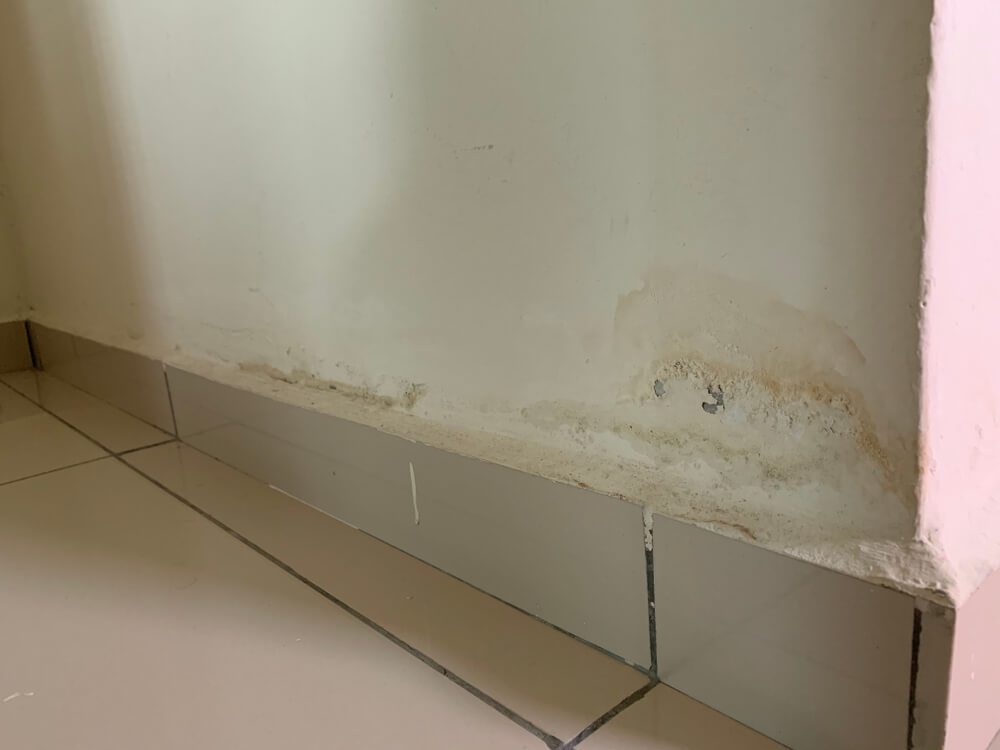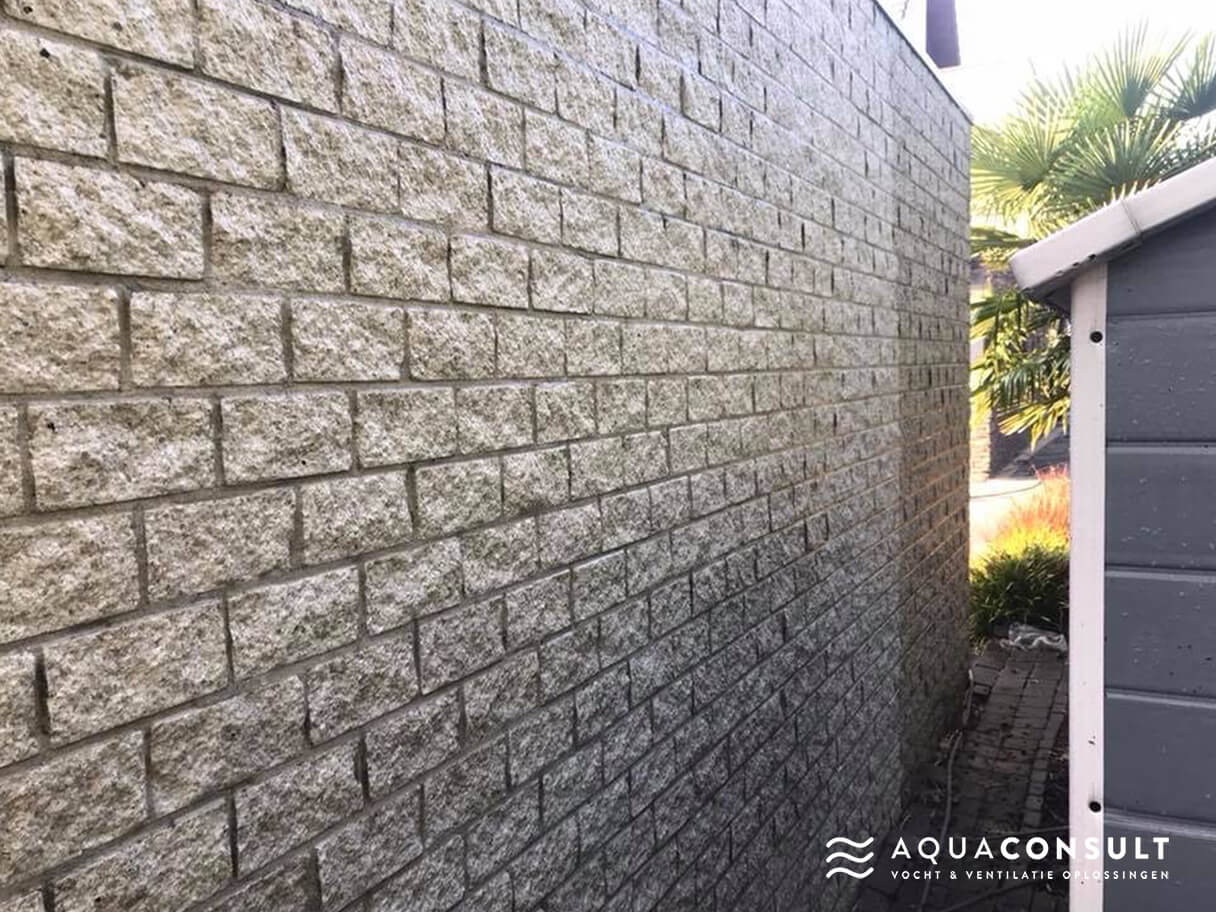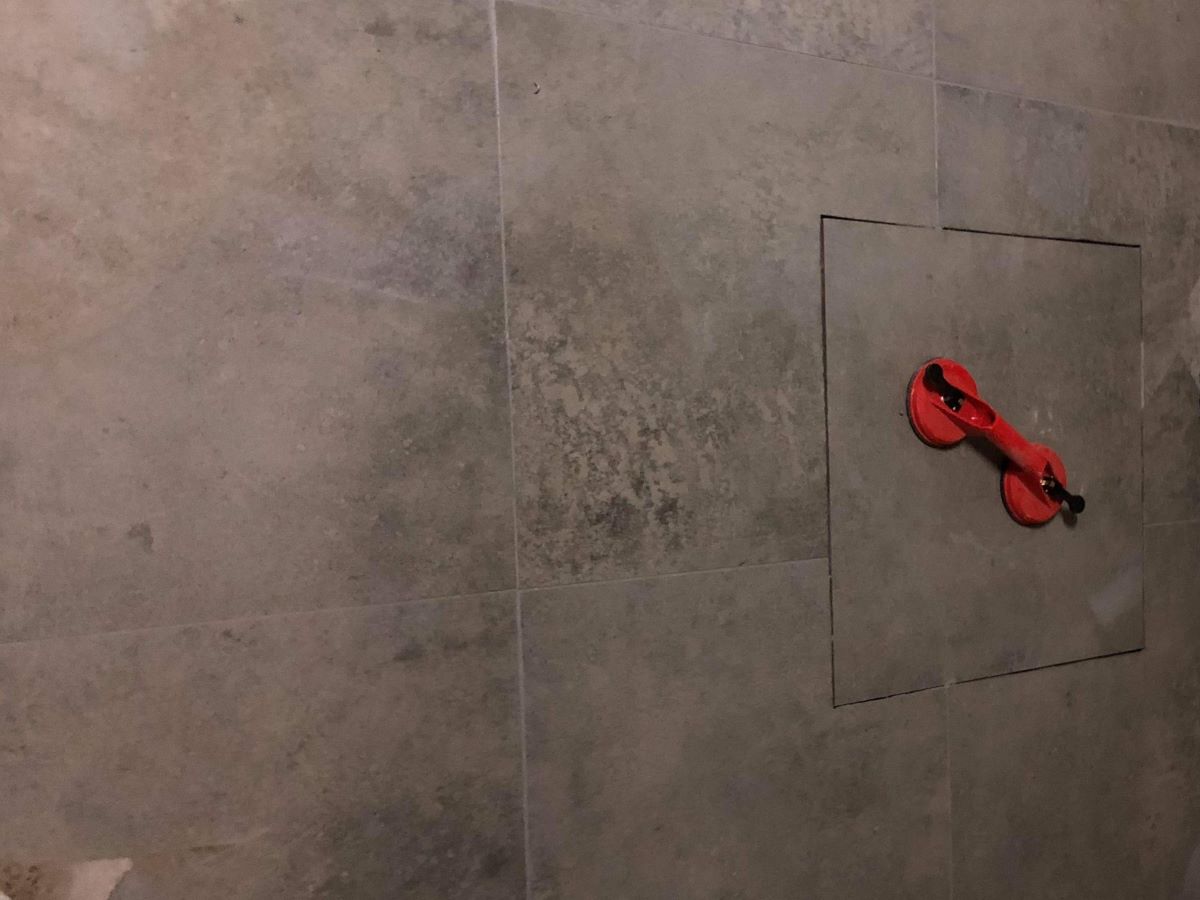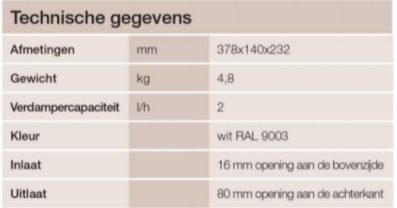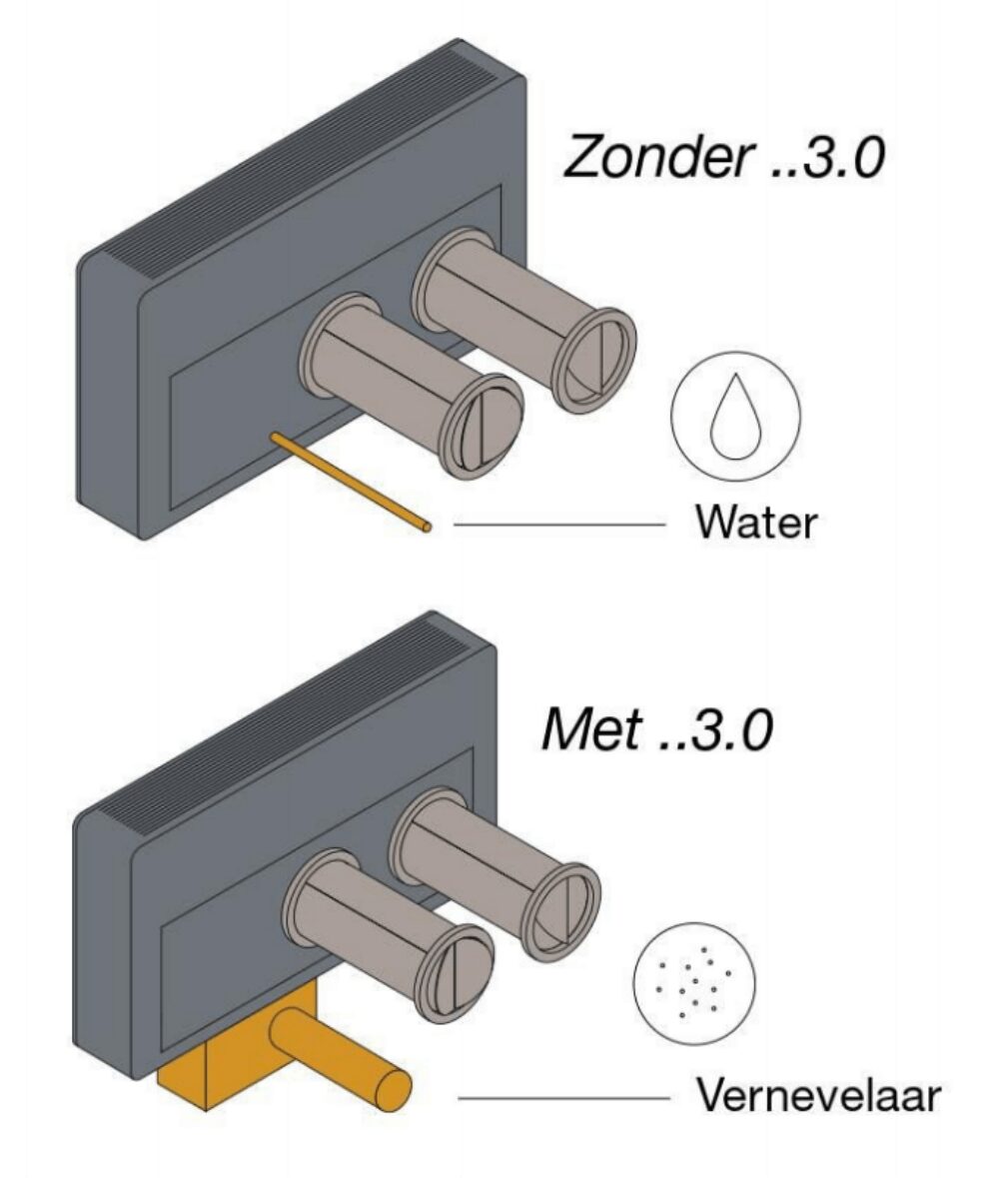Why is ventilation important?
Our homes are becoming better insulated, which of course is good news for energy consumption, which is steadily decreasing. However, these well-insulated homes also come with a risk: a possible lack of ventilation. In this article, we will explain why ventilating your home is essential.
Why is ventilating your home important?
More and more contractors are providing central ventilation systems in new construction homes yet this is not always done for every room. One example: basements are often a forgotten place when it comes to ventilation. The result: an increase in humidity and an increased risk of condensation (which in turn can cause mold).
Moral of the story: ventilation is important to help prevent moisture problems. In this article, we explain why ventilation can make a huge difference and what ventilation systems you can all have installed - without losing heat.
Four good reasons to ventilate your home
Were you looking for a reason why ventilation is important? We'll give you four important reasons.

1. Good air quality
Of course, the most obvious benefit of proper ventilation in the home is high air quality. When air circulates effectively, it automatically optimizes the air quality in the home, which is essential for a healthy indoor environment. This prevents the accumulation of too much CO2, which can otherwise lead to symptoms such as headaches, drowsiness and fatigue.
It is highly recommended to ventilate regularly, especially at venues where many people congregate, to ensure a healthy and fresh living environment.
2. Drain moisture from moisture problems
An average person produces about 10 liters of water vapor in a day that increases humidity. This is not little, especially if you share the house with several people! This includes all human and non-human activities such as breathing, showering, washing or cooking. Without proper ventilation, that moisture can do nothing but condense against cold surfaces such as walls or windows. Over time, this can lead to moisture problems such as mold and wetness in the home, with all its consequences.
Ventilating your home is usually the only method to effectively remove these amounts of moisture from a home. Especially in new homes, which in most cases are well insulated and airtight, well thought out ventilation is crucial to prevent moisture problems with condensation and mold. In other words, controlled ventilation must to keep the air clean and healthy.
3. No more musty smell
It is common knowledge that damp, non-ventilated rooms can smell very musty. This is, of course, a normal consequence of the lack of air circulation. In non-ventilated rooms, everything smells less fresh than in ventilated rooms.
4. Allergic? Then ventilation is definitely a must
Those with allergies such as hay fever or asthma know full well that fresh air is extremely important. Poor air quality can intensify asthma and some allergies, as well as cause additional symptoms such as headaches or fatigue.
What happens when you don't ventilate your home (enough)?
Several air quality problems can arise in homes where there is little or no ventilation:
- Recently installed building boards, building materials and adhesives can release volatile organic compounds (VOCs) into indoor air (source: Vision on Technology - VITO).
- Damp air can lead to condensation against cold surfaces (windows, walls). Condensation moisture can further cause mold and it affects painting and plastering.
- In an unventilated home with high insulation, the air pressure inside is almost never the same as outside. This can also cause the indoor air to become either too dry or too humid, depending on temperature differences.
- In homes where ventilation is inadequate, it can be challenging to achieve and maintain a comfortable temperature. This affects your energy bills.
- Finally, an inadequately ventilated home also has a negative impact on the health. Common consequences are:
- Increased risks of respiratory diseases such as asthma and allergies,
- Developing respiratory problems
- Possible adverse effects on the immune system.
- You may also notice an impact on your sleep and mood, causing you to experience lack of energy and concentration.
So how can you adequately ventilate your home?
Some tips
You can do all sorts of things to properly ventilate your home. We list some of them:
- Open your windows regularly. We recommend doing this for about 15 minutes daily, even in winter.
- Preferably cook with lids and dry your laundry outside as much as possible.
- Also, always turn on your fume hood while cooking.
The ultimate tip: a mechanical ventilation system
A good ventilation system helps automatically control the humidity and air pressure in your home. It uses pressure differences and provides regular ventilation without heat loss:
- The Belgian ventilation standard for passive houses gives as a guide number an n50 value of 1 if you choose ventilation system D with heat recovery. This is a system with mechanical supply and return. Concretely, this means that the air in the house may be changed once per hour at a pressure difference of 50 Pa (Pascal) between inside and outside.
- If you work with ventilation system C, where there is a natural supply through window grilles and a mechanical exhaust, the standard prescribes an n50 value of 3. So here you have three air changes per hour.

If you have ventilation system C, airtightness is very important for proper air circulation. With ventilation system D, airtightness is mainly important for heat recovery efficiency.
Are you suffering from condensation moisture somewhere in Flanders? Or are you facing another moisture problem? Contact Aquaconsult now and our experts will be happy to help you.
The importance of a water barrier in the wall in case of rising damp
Are you also suffering from rising damp in the walls? Then there's a good chance you have problems with the water barrier. Find out how best to deal with this.
What is a water barrier in your wall?
A water barrier is a layer of moisture-resistant material, usually integrated into the construction of the wall. It is designed to prevent the passage of water through the wall. Usually it is placed on the first row of bricks, flush with the floor pass, to ensure that moisture cannot enter the house through the basement walls, for example. In this way, therefore, it is a kind of weapon against moisture problems, preventing damage to the structure or interior of a building.
The importance of a water barrier in your wall
It is important that this layer be intact along the entire length of the walls. If it is not, or the water barrier is completely missing, it loses its function. Then:
- Water will spread into the wall, and thus you will suffer from rising damp.
- Will the salts contained in that water crystallize, resulting in white spots.
- Moss may also begin to form.
The infestation goes across the entire width of the wall and can go over a long length.

Fix problems with the water barrier in the wall
Are you experiencing rising damp due to a problem with the water barrier? If so, there are several methods available to address these water barrier problems, depending on the situation. We briefly list them below.
Note that if you notice moisture in the walls, it does not automatically mean that it is rising damp. It is always advisable to seek the help of an expert. An expert can determine the exact cause of the moisture problem and assess whether it is actually rising damp. Based on this analysis, he or she can then make specific recommendations for the appropriate control method. You can request a free moisture analysis from AquaConsult.
No water barrier is present
When you are dealing with rising damp, the first question you should ask yourself is whether there is a water barrier in your walls. Homes built before the 1980s, for example, often do not have a built-in water barrier. If your home's walls lack a water barrier, it is best to have one installed. There are two ways to do this.
- The first is to undercut the wall. This involves cutting into the wall a few inches above the floor and inserting a moisture barrier into the cut. In order not to compromise the stability of your house, this must be done very carefully, meter by meter. It is a time-consuming, labor-intensive and expensive job.
- A second option is to inject a damp-proofing agent into the wall. The damp-proofing gel is often silicone-based. When properly cured, groundwater will no longer be able to pass through the wall. AquaConsult uses REWAGEL Inject 3A+ for this purpose; moisture-resistant gel of the highest qualification you can find.
The existing water barrier is not doing its job
If a water barrier is already in place, the reasons why it is not functioning properly should be investigated.
- Usually, these are situations where the waterproofing layer is damaged or improperly placed. Then injecting walls is also an effective and durable solution here.
- Sometimes the plaster extends below the water barrier, which requires that it be removed and replaced with a water-repellent ("hydrophobic") product.
- In other cases, the ground level outside the house may have risen over the years, causing the water barrier to be too low and still allow water to seep into the walls. In that case, it is necessary to apply the waterproofing layer at a higher level.
Rising moisture, also a problem in summer
Rising damp is often thought to occur only in winter, but this is not true. You can also suffer from rising damp in the summer. The biggest reason is that rising damp is groundwater spreading into the walls of your home; and groundwater doesn't just occur in the fall and winter. So be sure to make an appointment for a free expertise if you think you have a moisture problem.
Do you have a moisture problem, and suspect it could be rising damp? Our field engineers are true experts when it comes to rising damp. Contact AquaConsult now for a no-obligation free expertise.
Cold bridges: cause of moisture problems and condensation
What are thermal bridges?
A thermal bridge is a weak link in your home's insulation. Cold bridges occur where insulation is lacking or poor. It is literally a place in a home where the "cold" is conducted from outside to inside. They are also called thermal bridges, thermal bridges or building knots.
The insulation shell is missing or interrupted, resulting in heat loss. As a result, the interior temperature drops and there is a greater need for heat. In addition, thermal bridges can also indirectly cause moisture problems. Moisture and thermal bridges are always the biggest problems in all renovation projects.
And that's not all: cold bridges can also cause problems in the summer. For example, thermal bridges allow warm air to enter, making it difficult to keep your home pleasantly cool.
The causes of cold bridges
Thermal bridges can have a variety of causes.
- Most thermal bridges occur at breaks in the insulation, in other words, when insulation materials do not fit together seamlessly.
- Cold bridges can also occur where there is no insulation at all. In older homes, this is often seen near shutters and floors.
- Less well known is that aged exterior joinery can also be a source of cold bridges. Older profiles sometimes contain no thermal break, allowing cold to run free.
Where are the cold bridges in a house?
A thermal bridge often occurs in all places where insulation does not connect properly. You can therefore sometimes detect a thermal bridge very clearly around exterior doors and windows, where the insulation is not optimally connected to floors or the door and window openings themselves. A few millimeters of opening is enough to allow a cold bridge during a cold winter period. Of course, a few millimeters of insulation loss will not cause serious moisture problems, but it will slightly increase energy bills.
Some examples of places where thermal bridges can occur:
- Transition from a wall to a window
- Window frames
- Eaves
- The place where the floor is in contact with the cavity wall
How do you recognize cold bridges?
You can't always see a thermal bridge, but you can feel it. If you rub your hand over a piece of wall or floor and notice a difference in temperature, you are dealing with a thermal bridge. If you see black mold or condensation on concrete slabs or windows, that can also be an indication of a thermal bridge.
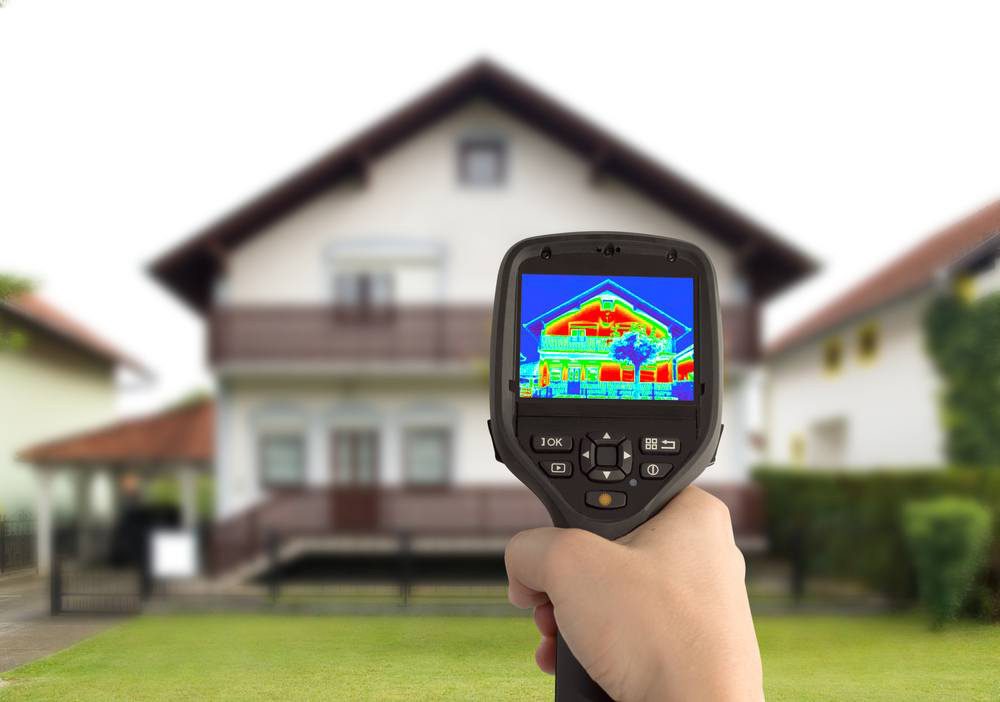
Which (moisture) problems cause cold bridges?
Cold bridges are the cause of a lot of moisture problems in the home. Especially alarming is the structural moisture damage it can cause on the cold wall. A cold bridge weak enough to cause the wall temperature to drop below 14°C encourages moisture problems such as condensation.
Where indoor moisture (which is naturally present in the warm indoor air) can condense against walls, mold gets a chance to form and moisture stains also develop. Houses with condensation and mold are additionally just not good for your health. Moreover, it is bad for plaster, wallpaper and/or painting. With wood structures, in turn, it can cause the wood to rot, resulting in instability. It's a real domino effect.
As the walls cool down sharply at the height of a thermal bridge, the natural moisture in the air will condense in these places.
Not only do cold bridges create moisture problems, but they also create another major problem: energy and heat loss. As mentioned earlier, thermal bridges create a temperature difference between the wall where there is a thermal bridge and the rest of the house. So in the winter, you will need more energy to heat your home, resulting in higher energy bills. With today's high energy prices, you obviously want to get that out of the way.
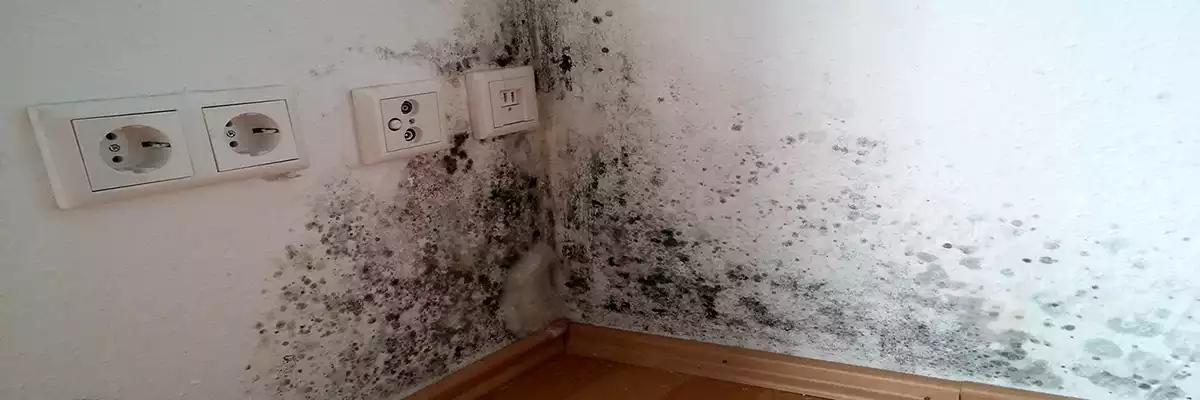
Influence of thermal bridges on the K and E levels
The Flemish government encourages homeowners to better insulate and airtighten houses (think of cavity wall insulation or crepi / exterior wall insulation). A renovation aimed at eliminating thermal bridges has several advantages for the value of the property:
- A more positive K-level (a degree of thermal loss due to the building envelope)
- A more positive E-level (a measure of the overall energy performance of a building)
How do you solve cold bridges?
Proper ventilation, insulation and heating are 3 rules of thumb to prevent cold bridges.
In older homes, it is not always simple to address thermal bridges; this is immediately a major renovation. Fortunately, you are entitled to grants or subsidies if you perform an energy renovation.
During such a renovation to solve thermal bridges, all insulation is properly connected to each other so that the insulation envelopes the entire house and there are no more energy leaks. If the insulation is completely continuous and not defective anywhere, thermal bridges do not stand a chance.
Is it really worth tackling thermal bridges, given that it is such a major renovation? Yes. Without thermal bridges, many moisture problems are solved and the energy bill is reduced.
Are you suffering from moisture problems? Contact AquaConsult now and we will be happy to help you.
How do you remove moisture stains from the wall?
There is nothing more annoying than being faced with the facts and seeing that you have moisture spots in your wall. Above all, don't worry, because there is a solution for everything. Only it is important to find out the cause of the damp spots before you can start removing them. Find out how to get rid of damp spots in this article.
Types of moisture spots on the wall
Typically, there are two different types of moisture stains that can affect your walls.
New moisture spots
New or fresh moisture stains occurred recently, indicating a relatively new moisture problem. Often such moisture stains are also still "active. You can recognize them by the color difference between the moisture spot and the dry wall.
Old moisture spots
Old moisture spots are often the result of long-term moisture problems where the source of the moisture has been present for an extended period of time. Such spots range from small brown spots to spots with a white powder.

Consequences of damp spots on the wall
Failure to address the cause of wall dampness will lead to a variety of negative consequences. Consider:
- Health Problems
- An unpleasant odor in the house
- A colder home that is harder to heat
- Damage to your furniture and home, reducing its value
Causes and corresponding solutions of dampness in the wall
The word says it all. Damp spots are caused by moisture. Moisture, in turn, can get you from a variety of causes:
- Rainwater that will eventually lead to penetrating moisture(e.g. wall exposed to rain showers for a long time);
- A leaking pipe or clogged gutter;
- Condensation;
- Groundwater leading to rising damp.
Each cause requires its own solution. Often, determining the cause and determining the needed cause is not obvious, so it is best to leave this to an expert. In addition, moisture stains disappear by themselves after a professional has done what is necessary to solve the moisture problem. So do not hesitate to seek the help of an expert.
Facade exposed to rainwater for too long
Did you get moisture problems due to rainwater coming into contact with the facade over a long period of time? Then chances are that the moisture spots on your wall are due to penetrating moisture. In this case, the moisture spots occur in all kinds of random places, and not only on the ground floor.
The ideal solution to this moisture problem is to have your facade impregnated or hydrophobized. This involves applying a transparent and waterproof layer to the facade using a transparent product. Hydrofuge is a product that makes your exterior walls water repellent. As a result, you will no longer get moisture spots on the interior wall either.
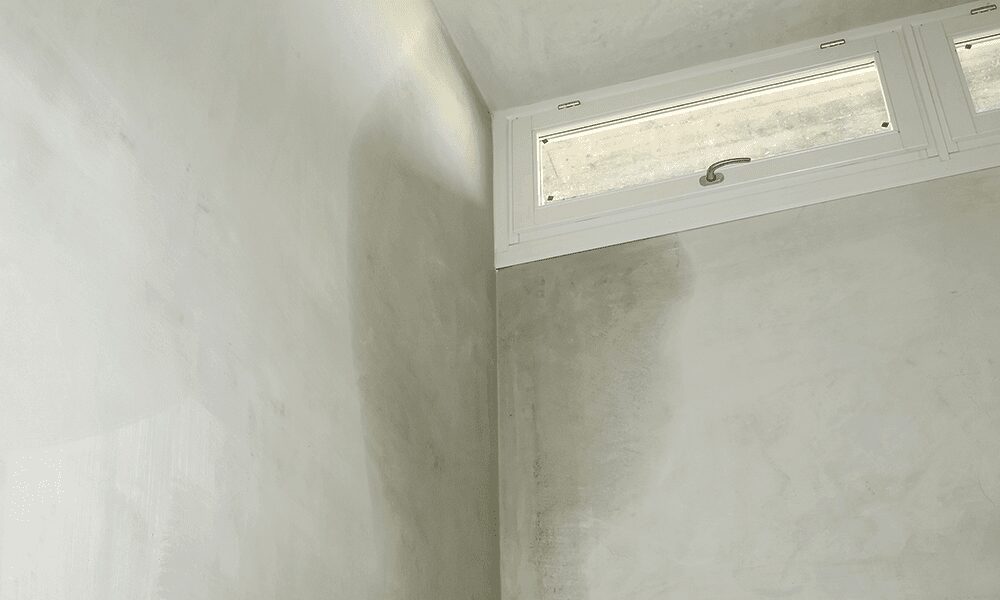
Gutter clogged or leaking
A gutter allows water to leave through the downspout when it rains. If you don't have a gutter, water flows down your facade and you risk exposing your facade to rainwater for too long.
So moisture problems can also be the result of a clogged gutter or a leak in the pipes. Unfortunately, this does not resolve itself; on the contrary, it only gets worse. By the way, a clogged gutter is worse than having no gutter at all, because with a clog, a large amount of water accumulates in one place.
Solving this problem can be done as follows:
- Unplug your downspout and properly maintain your gutter. You can do this simply by taking a ladder and taking out all the leaves that are in it. Especially in the fall, this is important.
- In case of a leak: contact a leak detection company. After all, it is difficult to pinpoint the exact location of the leak. In addition, the plumber can seal the leak purposefully and efficiently.
Excessive moisture
Rising damp is caused by direct contact between a brick wall and a damp wall. In problems of rising damp, groundwater is the main cause. The foundation and walls absorb this water, resulting in the most severe moisture close to the ground, but it can also spread further into the wall. This can cause significant damage to both interior and exterior walls.
The solution? Waterproofing the exterior wall by injecting a chemical product into the wall. A professional injects a moisture-resistant coating into the wall through drilled holes. This coating acts as an artificial barrier against water. After this step, the professional seals the drilled holes with waterproof mortar.

Condensation water
Wherever the air is too humid (think of a bathroom), condensation forms. And this, too, can eventually cause moisture spots on walls. In such places, adequate ventilation is the solution. You know what to do in the bathroom!
What can you do yourself to remove moisture stains on a wall?
As we mentioned, the first thing to do is definitely contact a professional to fix your moisture problem. Only after that can you repair your wall yourself. If you do want to get started yourself, here are a few helpful tips:
- Tackle the cause of the damp wall. If you suffer from rising damp, first make sure that the source of this moisture problem is drained using, for example, wall injections. This involves injecting a new water barrier layer. Ask here for a free moisture diagnosis for a first thorough analysis.
- Remove the wallpaper or remove the paint from your wall with a putty knife.
- Apply a moisture repellent, e.g. Aquaplan.
- Do you have cracks? Fill these up with putty.
- Make sure your wall is not soaked and then apply three layers of moisture-resistant coating.
- When everything is done and the wall is dry, you are ready to wallpaper or paint the wall again.
Attention! The instructions above will help you to remove moisture stains from your wall and not to conjure up mold. It is best to kill fungi with chlorine bleach. After the fungi disappear, rinse the chlorine away with warm water.
Do you suffer from moisture spots on your walls?
You prefer to avoid moisture problems, but if they are there, they just have to go. Period. Unfortunately, solving and removing moisture problems is not exactly a job that can be done in an instant. That's why AquaConsult offers you support you can't say "no" to.
Looking for more information around moisture control? Then be sure to read our blog on moisture problems and solutions.
What is the technical ATG approval?
Technical Approval
The general technical approval (ATG certificate) provides a technical opinion, including a description and technical properties. An ATG is a favorable assessment and declaration of suitability for use of one particular construction product from one manufacturer for a well-defined application. It is intended for innovative products and building systems for which no or insufficient standards exist.
Based on documented product performance, an ATG determines whether the product is suitable for a particular application and provides instructions for installation or handling. This ensures that these products and building systems are suitable for use, can be used or installed without risk and are of good quality. All this according to the rules of the art of the Belgian market.
The different variants of technical approvals
Over time, different types of technical approvals have been developed to meet the specific requirements of industry stakeholders. Some types include:
- ATG/H: for materials, products or kits.
- ATG/S: for wood treatment plants.
- ATG/M: for the use of road markings.
- ATG/E: for energetic innovations.
- ATG/D: for the curative treatment of wood.
- BENOR/ATG: technical approval linked to a BENOR certificate.
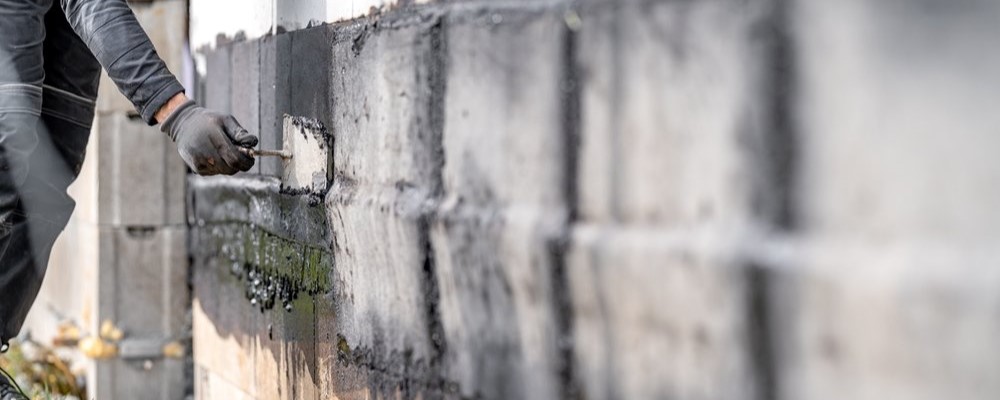
The advantages of an ATG certificate for consumers
An ATG label allows the user to check the conformity of the products delivered to the construction site with the existing approval. Since ATG certificates are issued for products and systems for which no product standards exist (yet), this is the only way to see if the products are approved and therefore of good quality.
Innovations in the construction industry are important to be more efficient in the long run. ATG certification ensures that construction sites do not become laboratories to test out those innovative ideas and thus customers are protected.
Who gets the ATG certificate?
In principle, an ATG is issued on the basis of an approval guideline. Such guideline is prepared by experts from the Belgian Union for Technical Approval in Construction (BUtgb) and provides an assessment basis for construction products. When you apply for technical approval, they then use simulations to test whether or not a product's performance decreases over time, which is a quality indicator.
On top of this, there is usually a certification, which means that a certification body mandated by the BUtgb conducts external monitoring, at a set frequency, of the conformity of production with the published approval. This review or monitoring is described in a convention drawn up when the ATG is granted. This convention specifies how the manufacturer organizes its own control of production and which external tests will be carried out in the process.
ATG certification allows companies like AquaConsult to apply non-traditional products and techniques without danger.
The difference with the European technical assessment
The European Technical Assessment, or ETA, is a legal instrument created by the European Construction Products Regulation. It is another way for manufacturers to show that their products are good and safe to use , and again, the application must be voluntary and at the initiative of the applicant. If a product gets this approval, the manufacturer is allowed to put a CE mark on the product. When they have that mark, they are allowed to sell this product in all countries of the European Union. So basically, the European Technical Assessment is a kind of key that gives you access to the market in Europe.
AquaConsult is a member of these building federations and quality labels
AquaConsult holds every major construction certification. This allows us to guarantee everyone the lowest price for the highest quality and guarantees. We only work with top products, which means that moisture problems will disappear permanently and will not return after 10 years. We offer a guarantee on our works of at least 20 years.
- BUtgb: Belgian Union for Technical Approval in Construction. The institute that issues technical approvals for building materials, products, systems and of installers.
- Buildwise: Scientific and Technical Center for the Construction Industry.
Are you suffering from a moisture problem in your home? Then contact AquaConsult and our field engineers will be happy to help you.
Unique in Flanders: have your basement poured with ceramic tiles
When soil moisture enters your basement, problems such as a damp basement floor, damp basement walls, musty odors and mold can occur. Obviously, this is something you want to avoid. One possible solution to this is basement waterproofing. Where basement waterproofing was previously only possible with concrete, AquaConsult offers a unique alternative: waterproofing your basement with ceramic tiles. Read all about it here.
What is basement cupping?
In many basements, the basement walls and floor are not sufficiently resistant to the pressure of groundwater. This causes salts to form in the walls, which then affect the plaster present. In this way, soil moisture can enter your basement through the basement walls and/or floor, which can have negative consequences. To combat this, you can have your basement drained.
In a basement waterproofing or basement sealing, the basement floor and walls are covered with a thick layer of waterproof cement. This creates a new protective layer, as it were, which ensures that groundwater can no longer pass through. Specifically, such a basement waterproofing works as follows:
- We remove the current occupation as much as possible to make the substrate visible. This allows us to determine where water is seeping through the wall, and a quick-drying waterproof cement mortar is applied to those areas.
- As soon as we determine that no more water is coming through the walls, we apply an initial seal coat.
- When this first layer has dried sufficiently, we proceed with another layer of cement mortar.
After performing (or having performed) these steps, water will no longer enter your basement.
Note that each situation is unique. In some cases, basement waterproofing is not sufficient, and basement drainage or ventilation will be required. Let AquaConsult assist you and request a free expertise to ensure you make the best choice for your basement.
Pair the practical with the pleasant: have your basement poured with a tile finish
Traditionally, basement waterproofing is done exclusively with a waterproof layer of concrete. But, you can also go a step further and have your basement waterproofed with certified ceramic tiles. AquaConsult is unique in this, and there are several advantages to doing so:
Less place loss
A basement casing is always accompanied by some loss of space. Typically, such loss with a traditional casing is about 8 cm, but with a tile finish this loss is reduced to about 5 cm.
Complete and beautiful finish
This basement sealing method automatically creates a nicer-looking basement that is also fully finished right away.
Cheaper
Basement waterproofing with ceramic tiles also comes with a more interesting price tag than basement waterproofing with concrete. Basement waterproofing actually involves renovating the entire basement, which of course is not cheap. However, with this unique process, the sealed basement is also immediately finished with certified ceramic tiles of 60 cm × 60 cm, which saves you in finishing costs. In addition, fewer materials are also needed to keep your basement dry, which benefits your wallet.


Do you have a damp basement and are looking for a suitable solution? Then AquaConsult is the right place for you. Contact us now, or request a free moisture expertise.
Innova monoblock
Innova AircoHeater 2.0. Without Outdoor Unit With Ionization
AeroConsult is a new division of AquaConsult and is the only installer in Belgium offering Innova Aircoheater Monoblock systems with ionization and air purification.
The Innova Air conditioner monoblock is among the very best monoblock air conditioners on the market. Innova monoblock air conditioning systems have no unsightly outdoor unit, making them elegant and practical to use.
- Cooling and heating
- Control via touchscreen, remote control or smartphone
- Only 16 cm depth
- Fixed outdoor grilles
The Innova Aircoheater monoblock is the only one offered with ionization by AeroConsult. Visit the website here or view the detailed brochure with more product information.


Advantages of an Innova air conditioner without an outdoor unit
The Aircoheater 2.0 cools and heats very energy efficiently via its built-in heat pump without an outdoor unit. This substantially improves energy performance without sacrificing the aesthetics of the home.
Easy installation
The "Aircoheater 2.0" can be easily installed on any exterior wall.
Everything needed for installation, being mounting template and mounting kit (A), the tubes for the holes (B) and the external grilles (C), is included in the package (with the exception, of course, of the bore and drill head).
Installation is easier than with any air conditioning system. The impact on indoor air quality is great.
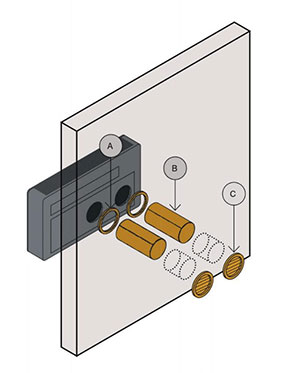
Why order an Innova Monoblock Air Conditioner from AquaConsult?
Best price guarantee
AquaConsult guarantees you the lowest price in Belgium and the Netherlands. If you can objectively demonstrate a better price that was applicable at the time you purchased the air conditioner from us, we will refund the difference.
Free delivery
Do you order your Innova Monoblock Air Conditioner from AquaConsult? Then transport costs within Belgium are included. This is actually an additional discount due to ever increasing energy prices.
Maintenance-free
Unlike some other suppliers, we do not require you to sign a maintenance contract. In fact, we don't even offer you a maintenance contract: our Innova Monoblock Air Conditioners are low maintenance; or even maintenance-free. So you don't have to worry about that.
Fast delivery and pickup possible
Thanks to our stock, we can help you very quickly. Do you choose the DIY installation? Then we will deliver your air conditioner within five days. Would you like to have the air conditioner installed by one of our professionals? Then you can count on a delivery period of up to two weeks.
Would you like to be helped faster? Then you can always come and pick up your air conditioner yourself as soon as we receive your payment.
With ionization to a healthier living environment
Our ionization devices eliminate pollutants, pollen, particulate matter, viruses and bacteria inside your home or office. We can equip your arico with the appropriate ionization system without affecting delivery or installation times.
Pricing for these ionization systems is available on the web shop of AeroConsult; our sister company.
Sublime design
At only 16 cm deep, the "Aircoheater 2.0" is by far the subtlest and lightest in its category. The aesthetic impact is minimal, both outside and inside.

Technical high quality
1. The body of the air conditioner heater 2.0 is now made entirely of metal. Strong and robust.
2. Wide control panel allows you to easily change any setting. Also equipped with a built-in WIFI receiver.
3. The condensing battery has high efficiency, with integrated evaporation effect which further improves the efficiency.
4. Compact thoughtful design
1. Lateral discharge also possible if the lateral discharge kit is added.
Blowout right side (TC.5.95.0040).
Blowout left side (TC.5.95.0042).
A. Horizontal indoor unit.
B. Lateral discharge kit.
C. Outer grilles.
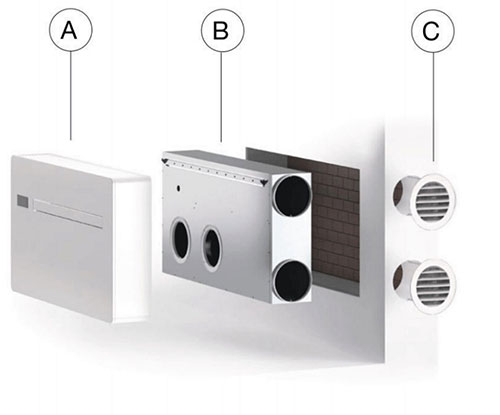
Request free expertise
Is moisture bad for your health?
Damage to health from humidity: we must avoid it, agree? Every room has a certain humidity level: when it gets too high, it can be harmful to your health. Find out here what impact too high humidity has on your health.
When is there too much moisture in the home?
There is moisture in every room, this is normal. Moreover, a normal room usually has a humidity percentage between 40% and 60%. That is, about half of the air in an indoor space consists of particles of water vapor. When the humidity is normal, you don't notice this. It is only when the air feels dry or clammy that the humidity may not be right. And when the humidity is too low or too high, it causes damage to your health.
Causes of too much moisture in the home
Excessive humidity has several types of causes. Some common ones are:
- Condensation. Condensation moisture often occurs in the bathroom or kitchen, but other rooms can also suffer from it. In the bathroom, it is important to have a window or a ventilation system. In the kitchen, a vapor barrier is important.
- Permeable moisture. Because a wall was exposed to rainstorms over a long period of time, moisture can build up because the water cannot get away properly. The ideal solution to make exterior walls water repellent is using paint or hydrofuge that absorbs the water.
- Rising damp. Groundwater is absorbed by the foundation and walls, so the worst moisture is near the ground.
- A leak or clogged gutter. A clogged gutter or a leak can also cause moisture. After all, a large amount of water accumulates.
Of course, condensation is normal in the kitchen or bathroom. Ventilation is important here so that this moisture can escape. If you do not ventilate sufficiently, the humidity level will be too high, which can be harmful to your health.
Leakage and rising damp are not only harmful to your home, but also to your health. By the way, you can recognize moisture by, for example, mold on your walls. And let's face it, we're talking about mold. These aren't exactly healthy, are they?
What are the harmful effects of too high humidity?
The direct impact of mold moisture in the home on your health
Moisture problems and mold in the home can cause various types of physical health complaints, some typical complaints include:
- Respiratory discomfort.
- A dry throat.
- Headache
- Irritated eyes.
- Frequent coughing.
- Fatigue.
- Rheumatic complaints, including pain in the muscles and joints.

These are all kinds of direct effects of moisture in the home on your health. People with asthma in particular are more likely to suffer from excessive humidity, and people who suffer from rheumatism will also find that their symptoms get worse.
Indirect effects on your health: dust mites and pests
There are also indirect effects due to moisture in the home.
- For example, damp rooms are an ideal environment for the growth of dust mites. People who are allergic to these microscopic insects will subsequently exhibit allergic reactions. These include sneezing, coughing, respiratory problems, shortness of breath, eczema or chronic inflammation of the nasal mucosa. As a result, they are much more susceptible to colds, they become irritable more quickly and symptoms of fatigue also return.
- In addition, moisture and mold can also attract pests, including silverfish or woodlice. These insects are not immediately bad for your health, but it's best to avoid them in your home.
So it is clear that excessive humidity can have negative effects on your immune system. This is because it costs your body a lot of energy to fight off the symptoms mentioned above, weakening your body in general.
Safety first! Get the moisture problem taken care of as soon as possible.
The fact that excessive humidity is unhealthy is no longer going to be denied. To avoid these negative consequences, it is important that you take moisture problems seriously and take immediate action. Depending on what is causing the moisture problem, there is always a customized solution.
However, because it is not always easy to determine what is causing the moisture and mold, it is always advisable to hire a moisture expert. This person can determine with certainty what problem you are facing, and will also suggest the most appropriate method. This guarantees that the moisture problem will be solved once and for all.
Are you suffering from excessive humidity somewhere in Flanders? Contact Aquaconsult now and our experts will be happy to help you.
Aquaconsult has 20 years of experience in the field of rising or breaking moisture.
Purchasing your own home is always a dream come true. That dream can sometimes quickly become a nightmare if it turns out that there are moisture problems in the home such as rising damp or penetrating damp.
The value of your home drops and energy costs rise, but more importantly, moisture is bad for your health. At AquaConsult you can come to AquaConsult for advice with experience.
With AquaConsult you bring in 20 years of expertise in solving problems with: rising damp, rising damp, penetrating damp, condensation, mold, moisture stains, saltpetre, house fungus, dust mites, damp basements, ventilation and facades. Request a free moisture diagnosis here.


Lowest price guarantee
We guarantee you the best value for money. However, should you obtain a lower price for the same qualification as ours, we will refund you the difference! Of course, subject to the submission of a detailed official price offer from a competing company of the same level.
Found a lower price elsewhere? Difference refunded!
Do you have a question? Do you wish for tailored advice? Contact us today.
Moisture control in your home: your solutions
Moisture control in your home
Moisture control in your home is necessary. It is good that you read this, because not every kind of moisture can be remedied with the same solution.
Moisture control in the basement? Discover your solution!
Moisture control in the basement
Do you have moisture in your basement? It's not crazy. It's usually the most common place. A cellar is more likely to be impacted by groundwater because it's underground.




